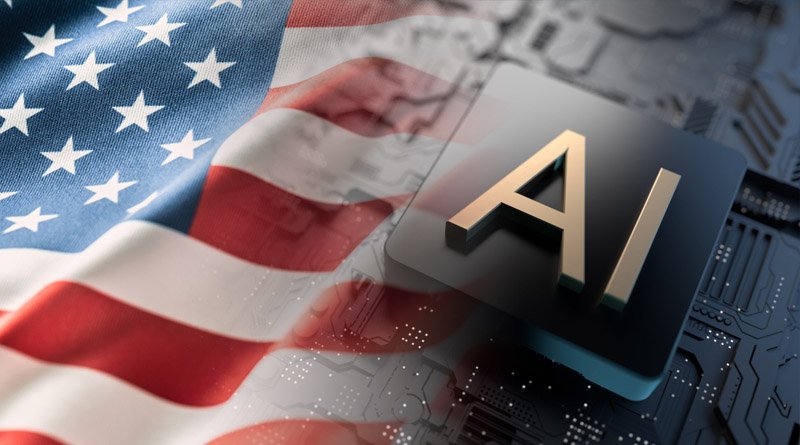Kelvin Droegemeier, who led OSTP during the Trump administration and advocated the national strategy idea, testified at the hearing.

The House Science Committee began the 118th Congress by looking at how a national science and technology strategy could assist in addressing pressing issues caused by climate change and competition with China.
The status of American science and technology in the context of the world and the best way to develop a national strategy that ensures U.S. leadership in S&T were the main topics of the House Science Committee’s first hearing under the new Republican leadership in the new Congress last month.
The White House Office of Science and Technology Policy is required by the CHIPS and Science Act to develop a national S&T strategy that will be subject to a quadrennial review. This strategy will be focused on leadership in the key technologies required to preserve economic competitiveness and satisfy societal needs.
Frank Lucas, the committee chair and a Republican from Oklahoma, commented on the requirement, saying, “The strategy ensures a comprehensive, whole-of-government approach to research and development, improving coordination between federal agencies, and a more strategic approach to prioritising our resources.”
Kelvin Droegemeier, who led OSTP during the Trump administration and advocated the national strategy idea, testified at the hearing.
He argued that a national strategy should avoid identifying specific R&D focus areas and instead look ahead 25 years to provide a “bold and transformative” vision and a “context” for more immediate initiatives. He also said it should address the values, norms, and rules governing domestic and international R&D collaborations, as well as consider all sectors of the U.S. research enterprise.
He said that everyone who examines the plan “should see themselves in that plan, all the way from the beginning, all the way through to execution, regardless of the sector they’re in.” When Lucas questioned Wince-Smith about the advantages of a national strategy, she argued that better cross-sectoral coordination is required and should be facilitated by a new, prominent policymaking body.
She observed, “Since the National Security [Council] in the White House and other organisations that deal with these domestic issues have the same stature and authority, I firmly believe that we need a separate organisation that works on this policy. But right now, we’re not integrating and bridging the sectors as needed.” Wince-Smith pushed for the inclusion of policy areas like fiscal and foreign policy—which ordinarily are outside the purview of OSTP—in the quadrennial review.
She specifically advocated for increased efforts in regional innovation and workforce development, the establishment of a “national infrastructure bank” to finance the production of new technologies, and the use of “technology statecraft” to further American interests in international trade and technological cooperation.
Rep. Suzanne Bonamici (D-OR) called for the strategy to bring stakeholders together, including the private sector, communities, and everyone in between, to ensure responsible development of technology that benefits all Americans and leaves no issue behind.
Zoe Lofgren (D-CA) highlighted Livermore’s recent achievement of fusion ignition and called for a national strategy to capitalize on scientific breakthroughs. She emphasized the need for whole-of-government and national strategic planning to ensure the U.S. does not repeat past mistakes in emerging technologies.
China is a key challenge to U.S. science and technology policy, both as a competitor and in terms of direct threats such as cyberattacks, espionage, and the transfer of intellectual property.
Lucas warned of the consequences of allowing the Chinese Communist Party to become the world leader in science and technology, such as fewer opportunities for American companies to compete in the global economy and increased risks to sensitive national security tools. Critical technologies like artificial intelligence, quantum information science, and cybersecurity tools will be shaped by and embedded with the CCP’s values.
Lucas noted that China is already ahead of the U.S. in certain metrics, such as outspending, out-publishing, and out-educating STEM PhD graduates. He also suggested that the Chinese government should spread the national security burden across its public and private sectors, but not through coercion.
Instead, he suggested that voluntary public and private partnerships should be forged based on a love of country, common interests, and our shared fate.
The CHIPS and Science Act addresses research security in academic settings by directing the National Science Foundation to establish a research security information-sharing and analysis organization. Droegemeier emphasized the importance of educating, training, and creating vigilance, but also promoting values.
There was little friction between Republicans and Democrats throughout the hearing, but there were differences in emphasis. Republicans were more likely to focus on issues related to China, while Democrats focused on climate change.
Rep. Andrea Salinas (D-OR) asked how to compete with China and address climate change. Droegemeier argued that the U.S. should continue to welcome researchers from China, use it as an opportunity to model values, and press China on its construction of coal-fired power plants.
Rep. Maxwell Frost (D-FL) asked Droegemeier how a national strategy might address climate change. He suggested building an Earth simulator at Livermore, and asked Budil to elaborate on the potential of computer simulation.
Budil cited the introduction of machine learning and artificial intelligence methods and the installation of Exascale machines at DOE national labs. She also noted that by taking on board large amounts of data, we should be able to give communities a real edge in understanding who’s likely to be visiting them.
